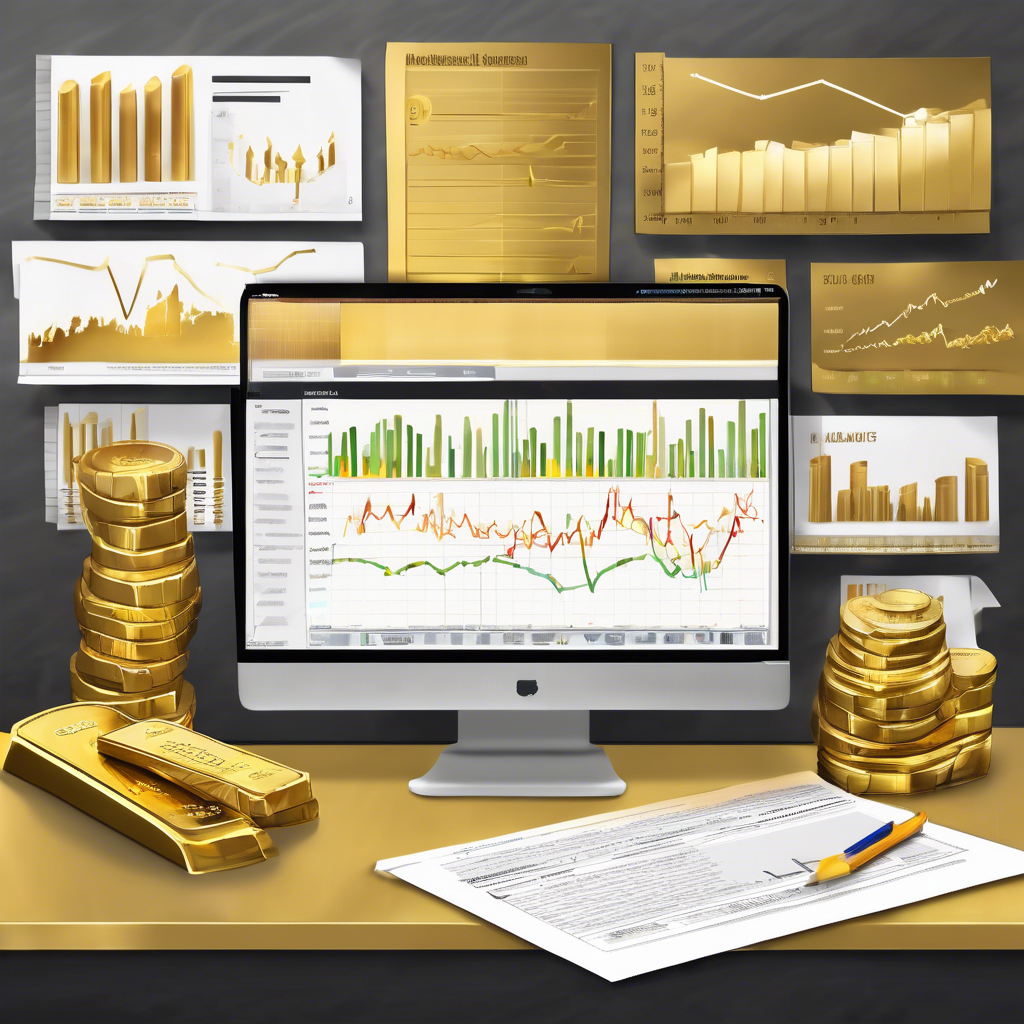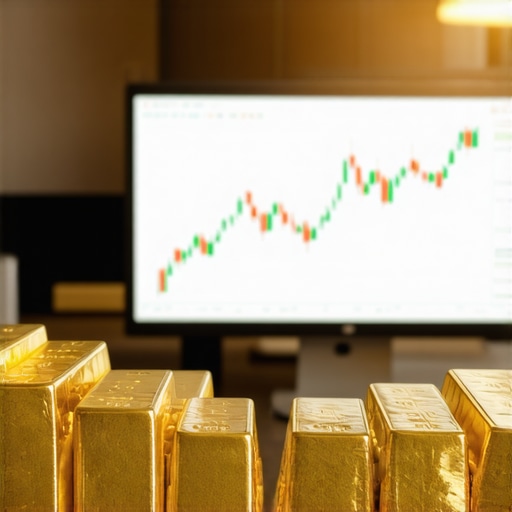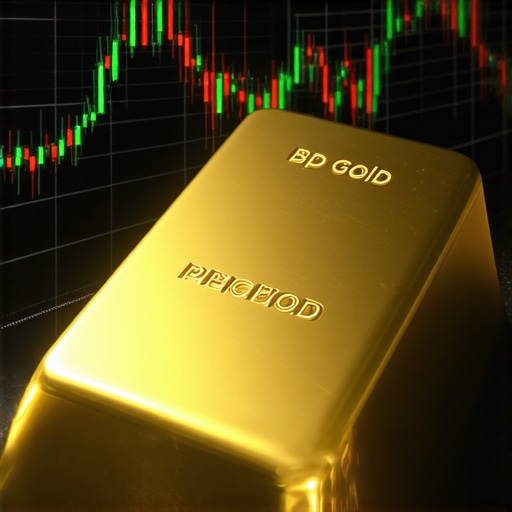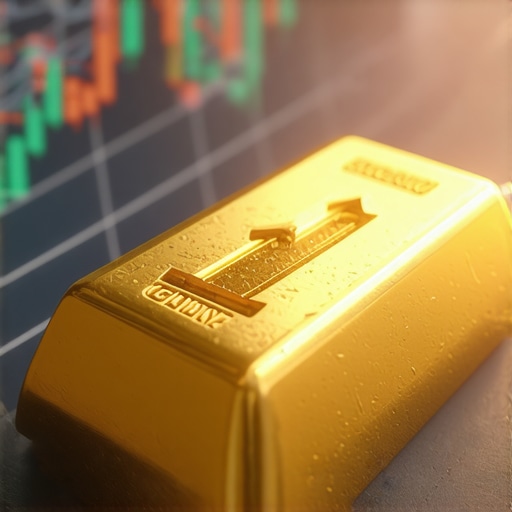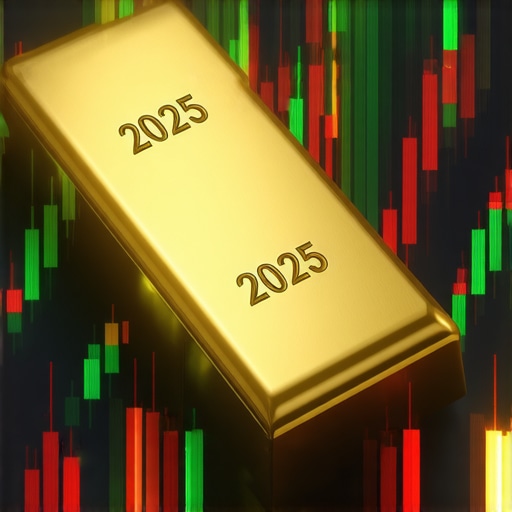Understanding Gold Price Trends: What Drives Movements?
The gold market has always been a hot topic among investors, particularly as economic conditions fluctuate. In 2025, the analysis of gold prices reveals a complex interplay of various factors influencing trends. To better understand these movements, we need to explore the primary elements that affect gold prices.
Economic Indicators and Their Effects on Gold Prices
Economic indicators play a crucial role in shaping investor sentiment towards gold. For instance, rising inflation often drives investors to seek safe-haven assets like gold. When inflation rates soar, the purchasing power of currency declines, prompting individuals to invest in gold as a hedge against inflation. This demand can lead to increased gold prices.
Moreover, interest rates significantly impact gold investments. Typically, when interest rates are low, the opportunity cost of holding non-yielding assets like gold diminishes. Consequently, lower rates can lead to increased gold purchases, pushing prices higher. Conversely, higher interest rates can deter investment in gold, as investors may prefer assets that yield interest.
Geopolitical Events and Market Sentiment
Geopolitical tensions and uncertainties often result in market volatility, which can drive gold prices up. For example, conflicts or political instability in major economies can lead investors to flock to gold for safety. During such times, the demand for physical gold and gold-backed assets tends to surge, influencing market prices significantly.
Additionally, central bank policies and their gold purchases can impact market dynamics. Central banks across the globe often hold substantial gold reserves, and their buying or selling activities can create ripples in the market. For instance, if a central bank announces an increase in gold purchases, it can signal a bullish outlook on gold, prompting other investors to follow suit.
Global Demand and Supply Dynamics
The balance of gold supply and demand is another fundamental factor that influences prices. In 2025, the demand for gold from various sectors, including jewelry, technology, and investment, will likely play a pivotal role in determining price trends. Emerging markets, particularly in Asia, have shown a growing appetite for gold, which can drive prices higher.
On the supply side, gold mining production and recycling rates can affect the overall availability of gold in the market. Any disruptions in mining due to operational challenges or regulatory issues can lead to a decrease in supply, consequently pushing prices upwards. Understanding these dynamics is essential for investors looking to navigate the gold market effectively.
For those interested in exploring different investment strategies, it’s beneficial to consider various options such as gold ETFs or mutual funds. Each investment type has its unique risk profile and potential rewards. For instance, comparing gold ETFs vs. gold mutual funds can provide insights into making informed decisions based on personal investment goals.
As we delve deeper into the realm of gold price analysis, recognizing these key factors will empower investors to make strategic choices. Understanding the macroeconomic landscape and its influence on gold prices is essential for anyone looking to invest wisely in this precious metal.
Gold Price Influences: Understanding Market Sentiment
Market sentiment is a significant driver of gold prices. Investors often react to news and economic data, which can cause fluctuations in demand for gold. For example, during times of uncertainty or economic downturns, gold is perceived as a safe-haven asset, leading to increased demand. This behavior can be observed in recent years, where geopolitical tensions have consistently pushed gold prices higher as investors seek refuge from volatility.
Impact of Inflation on Gold Value
Inflation concerns are another primary factor influencing gold prices. As the cost of living rises, the value of currency decreases, prompting investors to turn to gold as a hedge against inflation. This trend will likely continue into 2025, as economic forecasts indicate potential inflationary pressures in various regions. Understanding how inflation affects purchasing power is crucial for any investor considering gold as a viable option.
Moreover, the relationship between inflation and interest rates cannot be overlooked. Central banks often raise interest rates to combat inflation, which can initially dampen gold prices as investors gravitate toward interest-bearing assets. However, if inflation persists despite high rates, demand for gold can surge, highlighting the complex dynamics at play.
Central Bank Policies and Their Influence on Gold Prices
Central banks hold vast quantities of gold in reserves, and their policies can significantly influence market behavior. For instance, when central banks increase their gold purchases, it often signals confidence in gold’s future value, prompting other investors to follow suit. In 2025, monitoring central bank activities will be essential for predicting gold price movements. Investors should consider the implications of these policies on the overall market and their investment strategies.
Additionally, understanding the nuances of gold-backed investments, such as gold ETFs vs. mutual funds, can help investors navigate the complexities of gold investments. Each option presents different risk and reward scenarios, making it vital for investors to evaluate their choices based on market conditions.
Technological Advancements and Their Role in Gold Investment
Technological advancements in mining and trading have also begun to shape the gold market. Innovations in extraction methods have the potential to increase supply, which may affect prices. As new mining technologies emerge, they can lead to more efficient recovery of gold, impacting supply dynamics and consequently, market prices.
Furthermore, the rise of digital platforms for trading gold has made it more accessible for individual investors. With the advent of apps and online trading platforms, buying and selling gold has become easier, fostering a broader market participation. Understanding these technological shifts is key for investors looking to leverage new opportunities.
Global Economic Conditions: A Broader Perspective
The interconnected nature of global economies means that events occurring in one part of the world can have far-reaching effects on gold prices. Economic slowdowns in major markets can lead to increased gold demand as investors seek stability amidst instability. For instance, if a significant economy faces recession, the ripple effects could enhance gold’s appeal as a safeguard against financial uncertainty.
In addition, keeping an eye on international gold demand, particularly from emerging markets, can provide insights into potential price movements. Countries in Asia, especially China and India, traditionally have high gold consumption rates. Their demand fluctuations can significantly impact global prices, making it essential for investors to stay informed about these trends.
As we continue to analyze various factors influencing gold prices, understanding how these elements interact will be crucial. The interplay of market sentiment, economic indicators, and technological advancements creates a dynamic environment for gold investment. Investors should remain vigilant and adaptable, ready to respond to the evolving landscape.
Technological Innovations in Gold Mining and Trading
As we explore the evolving landscape of gold investments, technological innovations are at the forefront. Advancements in mining techniques, such as automation and artificial intelligence, have the potential to revolutionize gold extraction. These innovations can lead to increased efficiency, allowing for lower production costs and potentially higher profit margins for mining companies. For investors, understanding how these technological changes impact supply can guide decisions about when to buy or sell gold.
Furthermore, the rise of blockchain technology is reshaping how gold is traded. By providing a transparent ledger of transactions, blockchain enhances trust and traceability in gold investments. This technology can reduce fraud and ensure that investors are purchasing genuine gold products, which is crucial for maintaining confidence in the market.
The Expansion of Gold Investment Platforms
The digital era has transformed how individuals invest in gold. Online trading platforms and mobile applications have made purchasing gold more accessible than ever. These platforms allow investors to buy gold ETFs or fractions of physical gold without the need for large capital outlays. For instance, navigating gold ETFs for new investors provides insights into how these tools can be leveraged effectively.
Moreover, educational resources available online have empowered new investors to make informed decisions. Many platforms offer insights into market trends, analysis, and tips for optimizing returns, making it easier for individuals to navigate the complexities of gold investing.
Understanding Global Economic Trends and Their Effects on Gold Prices
The interconnectedness of global economies means that changes in one region can reverberate throughout the gold market. For example, economic slowdowns in major markets often lead to increased demand for gold, as investors seek stability amidst uncertainty. Countries like China and India, with their rich traditions of gold consumption, can significantly influence global demand. Any fluctuations in their purchasing behavior can have immediate effects on gold prices.
Geopolitical Developments and Market Reactions
Geopolitical events also play a vital role in shaping market sentiment toward gold. Tensions between nations, trade wars, or conflicts can create volatility in financial markets, prompting investors to flock to gold as a safe haven. The recent history of rising gold prices during periods of geopolitical unrest underscores this relationship. Investors should remain vigilant regarding global news and geopolitical developments, as these events can have immediate implications for gold pricing and investment strategies.
Additionally, the role of central banks in the gold market cannot be overstated. Their buying and selling activities often signal confidence or skepticism about economic conditions, influencing investor sentiment. Monitoring central bank actions, especially in emerging economies, can provide valuable insights into potential trends in gold prices.
Emerging Market Dynamics: The Future of Gold Demand
As we look toward the future, understanding emerging market dynamics is crucial for anticipating shifts in gold demand. Countries in Asia, particularly India and China, are experiencing growing middle classes with increasing disposable incomes. This demographic change is likely to drive higher gold consumption, particularly in jewelry and investment sectors.
Investors should also consider the cultural significance of gold in these regions. In India, for example, gold is not only viewed as an investment but also as a symbol of wealth and status. This cultural aspect can sustain demand even during economic downturns, making it essential for investors to consider the broader implications of regional trends.
As the gold market continues to evolve, staying informed about technological advancements, global economic conditions, and emerging market trends will be vital for making strategic investment decisions. Investors should embrace a proactive approach, ready to adapt to the changing landscape of gold investments.
Emerging Trends in Gold Investment: Insights for 2025
As the gold market evolves, staying abreast of emerging trends is essential for investors aiming to maximize their returns. The landscape of gold investment in 2025 is influenced by various factors, including technological innovations, changing consumer preferences, and macroeconomic conditions. Understanding these trends will equip investors with the knowledge needed to navigate the market effectively.
Shifts in Consumer Preferences and Gold Investment
The demand for gold is not only driven by economic factors but also by changing consumer preferences. Millennials and Gen Z investors are increasingly drawn to gold as an alternative asset class. This demographic shift is fostering interest in gold-backed digital assets, such as gold ETFs and cryptocurrencies tied to gold. For instance, navigating gold ETFs for new investors highlights how younger investors are leveraging technology to engage with gold investments.
Moreover, the cultural significance of gold, particularly in countries like India and China, continues to drive demand. Gold retains its status as a symbol of wealth and tradition, influencing purchasing behaviors. Investors looking to capitalize on these trends should pay close attention to seasonal demand patterns, especially during festivals and wedding seasons when gold purchases peak.
Technological Innovations: A Game Changer for Gold Trading
Technology is revolutionizing the gold market, enhancing accessibility and efficiency. The rise of blockchain technology is particularly noteworthy, as it ensures transparency and security in gold transactions. By offering a verifiable record of ownership, blockchain can reduce fraud and increase investor confidence. For investors interested in the practicality of these innovations, understanding the implications of blockchain can guide informed decision-making.
Additionally, online trading platforms have democratized access to gold investments. With user-friendly interfaces, these platforms allow investors to buy and sell gold with ease, making it a viable option for individuals with varying levels of investment experience. For those considering diving into gold investments, exploring tips for beginners in gold investing can provide foundational knowledge.
Gold Market Dynamics: A Comprehensive Analysis
Analyzing the dynamics of the gold market requires an understanding of both domestic and international factors. The interconnectedness of global economies means that economic indicators in one region can directly affect gold prices elsewhere. For instance, fluctuations in the U.S. dollar, which often inversely correlates with gold prices, can create ripple effects throughout the market. Investors should monitor currency trends closely to anticipate potential changes in gold pricing.
Geopolitical Factors and Their Impact on Gold Prices
Geopolitical tensions remain a significant driver of gold prices. Events such as trade disputes, political instability, or conflicts can lead to increased gold demand as investors seek safety. Understanding the geopolitical landscape is crucial for predicting market movements. Observing recent events and their impacts on investor sentiment can provide valuable insights into potential price trajectories.
Moreover, central banks’ activities, including their gold purchasing patterns, can influence market dynamics. Central banks have been net buyers of gold in recent years, signaling confidence in gold’s long-term value. Keeping track of these trends can help investors align their strategies with broader market movements.
Environmental Considerations in Gold Mining
Another emerging trend that investors should consider is the growing emphasis on sustainable and responsible gold mining. As environmental concerns gain prominence, investors are increasingly seeking ethical investment opportunities. Companies adopting sustainable practices in gold mining may appeal more to socially conscious investors. Understanding the environmental impact of gold mining can enhance an investor’s portfolio and align with personal values.
As we look forward to 2025, recognizing these trends in gold investment will be pivotal for informed decision-making. By understanding shifts in consumer preferences, technological innovations, and global dynamics, investors can position themselves for success in a continually evolving market.
Frequently Asked Questions About Gold Prices
What factors influence gold prices in 2025?
Gold prices are influenced by several factors including economic indicators such as inflation and interest rates, geopolitical events, central bank policies, and global supply and demand dynamics. As we move into 2025, these elements will continue to play a vital role in determining gold price movements.
How does inflation affect gold value?
Inflation typically leads to a decrease in the purchasing power of currency, prompting investors to seek gold as a hedge against inflation. When inflation rates rise, the demand for gold usually increases, driving prices higher.
Why do central bank policies matter for gold prices?
Central banks hold significant gold reserves, and their buying or selling activities can influence market sentiment. When central banks increase their gold purchases, it often signals confidence in gold’s future value, which can drive prices upward.
How do geopolitical events impact gold investment?
Geopolitical tensions, such as conflicts, trade wars, or political instability, can lead to market volatility, which typically increases demand for gold as a safe haven. Investors often flock to gold during uncertain times, pushing prices higher.
What role does technology play in the gold market?
Technological advancements in mining and trading, such as automation and blockchain, are transforming the gold market. These innovations improve efficiency in extraction and enhance the security and transparency of transactions, influencing investor confidence and market dynamics.
How can I invest in gold in 2025?
Investing in gold can be done through various means, including physical gold, gold ETFs, and mutual funds. Each option has its own risk profile and potential rewards, so it’s essential to evaluate your investment goals and market conditions before choosing.
What are the emerging trends in gold investment for 2025?
Emerging trends in gold investment include a shift toward digital assets, increased demand from younger investors, and a focus on sustainable mining practices. Investors should pay attention to these trends to maximize their returns in the evolving market.
How do emerging markets affect gold demand?
Emerging markets, particularly in Asia, are experiencing growing middle classes with increasing disposable incomes. This demographic shift is expected to drive higher gold consumption, particularly in jewelry and investment sectors, significantly influencing global demand.
What educational resources are available for gold investors?
Numerous online platforms provide valuable resources for gold investors, including market analysis, insights, and tips for optimizing returns. Websites like Kitco, World Gold Council, and Investing.com are excellent starting points for research and education.
Authority Resources for Gold Investment Insights
For investors seeking reliable information on gold prices and market dynamics, several trusted resources can provide valuable insights. These include:
- Kitco – A leading source for precious metals market information, offering real-time gold prices and analysis.
- World Gold Council – Provides comprehensive reports and research on gold demand, supply, and market trends.
- Investing.com – Offers a wide range of financial tools, market data, and news to help investors make informed decisions.
- Bloomberg Commodities – Delivers market news and analysis for commodities, including gold, with a focus on global economic conditions.
- Reuters Commodities – Provides up-to-date news and analysis on commodity markets, including insights into gold price movements.
Conclusion: Navigating the Gold Market in 2025
As we approach 2025, understanding the complex interplay of factors influencing gold prices will be essential for investors. From economic indicators to technological innovations and emerging market dynamics, staying informed will empower individuals to make strategic decisions in their gold investments. By leveraging authoritative resources and keeping an eye on market trends, investors can navigate the evolving landscape of gold prices effectively and capitalize on opportunities in this precious metal market.






